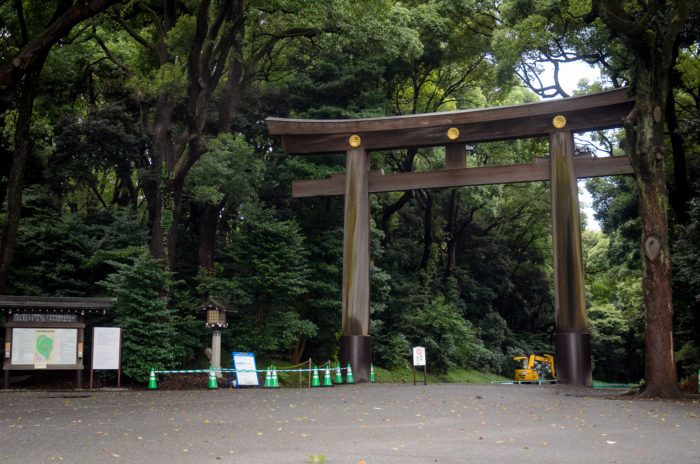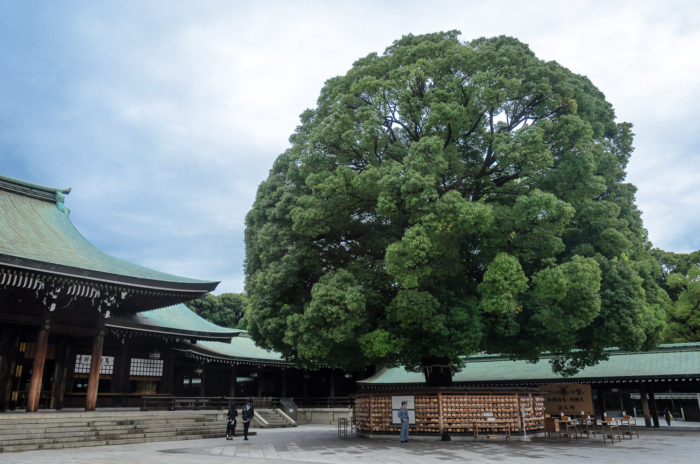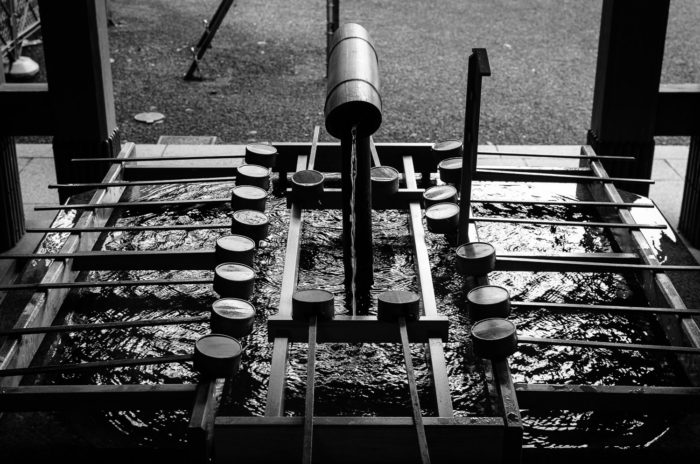
Before the concrete jungle of Tokyo rose from the ground and before the messy international conflicts of the 20th century, Japan was but a feudal society a mere 150 years ago. What seems like a distant past is actually but a stone’s throw away, and the shrines of Tokyo are a reminder of that past that’s still very much alive. For our trip, my wife and I checked out Meiji Shrine & SensÅ-ji, two of the most famous in Tokyo.


Meiji Shrine lies in the middle of Yoyogi park, a large densely forested patch of land sandwiched between Harajuku and Shibuya. Yet despite its busy surroundings, the park grounds are an oasis from modernity. The shrine is dedicated to the Meiji Emperor, who oversaw the decades of rapid modernisation between 1868 to 1912.
Not all of the facilities are open at eight o’clock in the morning, but there were already people making use of the spiritual facilities at the shrine. The shrine maidens and priests were at work bright and early, banging the drums and preparing for the opening of the stalls.
We took the time to get a sampling of the shrine experience by trying the temizu purification ritual, which involves washing your hands and mouth with a bamboo water scooper. We also took a crack at writing our ema plaque, just as the tourist buses came barrelling into the park.
I was conflicted about participating in the shrine rituals. I felt like I was making a mockery of the practices by going through the motions without really believing in any of it. I suppose that’s because the place felt like a spiritual site, which is more than I could say about our other stop.
At SensÅ-ji in Asakusa, we certainly had no reservations on partaking in the tourist activities, because that seemed like its only purpose. The narrow path to the oldest Buddhist temple in Tokyo is flanked on both sides by a 200-meter gauntlet of gaudy souvenir shops. Squeezing through the masses of fellow tourists on a busy rainy afternoon is as unpleasant as it sounds.


The temple grounds has been adapted into an highly efficient tourist trap. Visitors are encouraged to donate and draw fortunes at dozens of spots all over the grounds, as well as buy some mass-produced shrine charms. You literally can’t walk very far without finding a money receptacle of some sort. While these are arguably measures of necessity to accommodate the never-ending stream of tourists, the temple does lose any air of dignity.
As with all cities, the cultural sites of Tokyo matter. Though it may not look like it at first, both SensÅ-ji and Meiji shrine had been destroyed during World War II. The reconstruction of these sites signalled the reconstruction of the country as a whole, and to this day they remain the anchor to the city’s identity in the midst of the incredible changes over the decades.
With that said, if you’re planning to check out Meiji Shrine or SensÅ-ji, go before everything’s open. The shrine grounds open early and close late, and based on what I saw at Meiji Shrine, the tourists don’t flood in until the shops and stalls are open. If you simply must buy souvenirs like the shrine charms, you can always stick around a bit longer for that, but showing up a few minutes before the buses roll in truly makes a world of difference in the experience.












2 replies on “Japan Post #2: Meiji Shrine and SensÅ-ji”
Very cool! Looking forward to more of these. And I’m loving your pictures!
Just returned from my own first trip to Japan yesterday and did also visit the Meiji Shrine. It really showcased the minimalist aesthetic of Japanese sites.
We where super lucky with our timing as the shrine is preparing a new copper roof for the upcoming 100 year celebration. For a small donation we where able to write our wishes and names on the back of one of the copper plates to be used, making it a part of the shrine for the next 100 years (or hopefully even more). 🙂